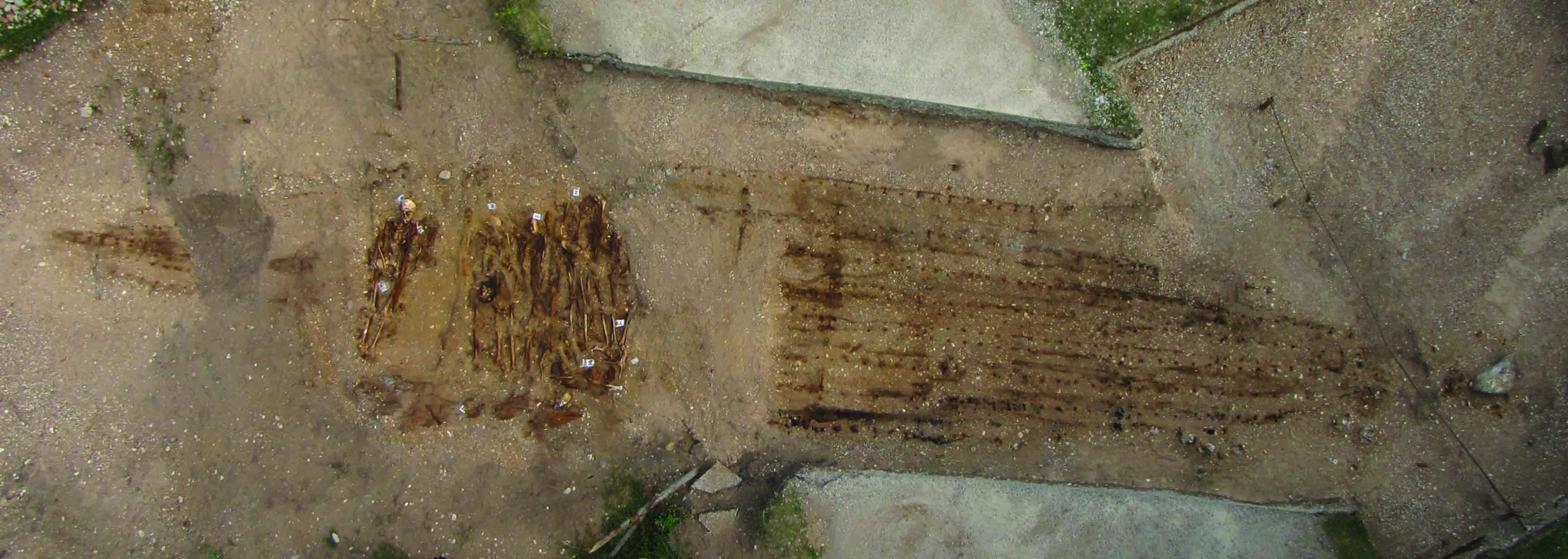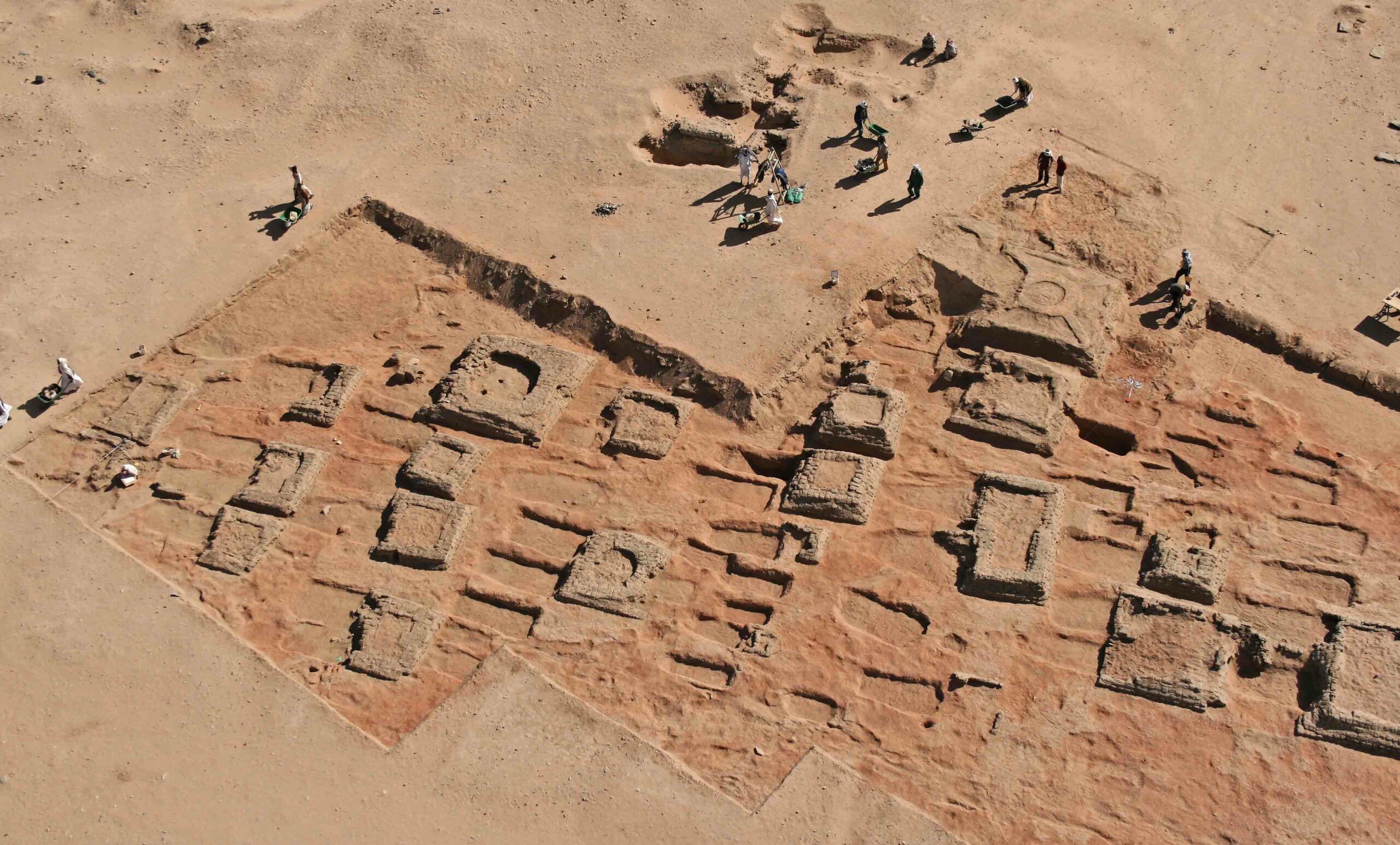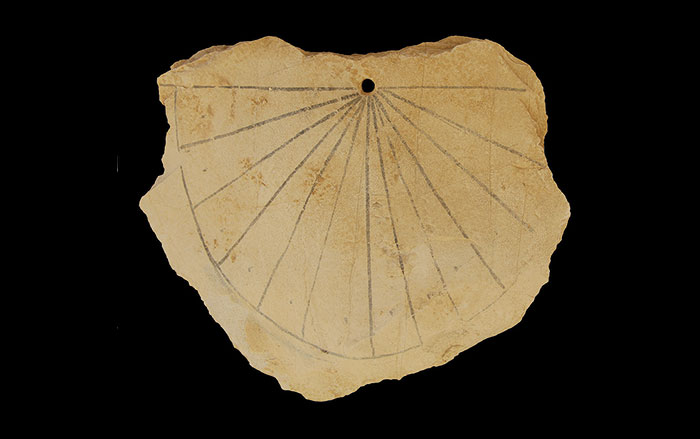
When University of Georgia archaeologist Mark Abbe first saw the fragment of sculpture at the University of Mississippi Museum, the light was low and he didn’t get a very good look. Yet Abbe was intrigued by the faint traces of color he saw on its white marble surface. At the time, he couldn’t have imagined why the relief struck him as different from the thousands of other ancient sculptures he had seen. Wanting to know more, museum Director Robert Saarnio allowed Abbe to bring the relief to the Georgia Museum of Art in Athens. “As soon as I got it back here under good light, I thought, ‘Wait a second, this isn’t like anything I have seen before,’” says Abbe.
While only the section depicting the god Hermes exists, the fragment is actually part of a celebrated ancient composition known as the “Orpheus Relief.” This scene shows Hermes leading the nymph Eurydice back to the underworld after her final parting from her beloved Orpheus. Back in Athens, Abbe and Jeff Speakman of the Center for Applied Isotope Studies used hyperspectral imaging techniques to collect data beyond what the human eye can see. When combined with chemist Tina Salguero’s study of minute traces of pigment, the results were a complete surprise—what had always been thought to be a first-century Roman copy of a late fifth-century B.C. Greek original, had, in fact, been made between 1880 and 1920. “As soon as we saw pigments without ancient parallels, such as titanium white and phthalocyanine blue, we knew the paint wasn’t ancient,” explains Abbe. As he continued to examine the sculpture, he began to realize that it wasn’t just the pigments that weren’t right—the piece could still have been ancient, with the paint added for the marketplace thousands of years later. “At first it just looked like an over-scrubbed ancient artifact, but the more we looked at the surfaces, we realized they weren’t akin to Roman practice,” Abbe says.

There is always “the whiff of a scandal” when a work is discovered to be a fake, says Abbe. But to settle for stamping the relief “a fake” and moving on is to miss the opportunity such an artifact brings. While the Greek original is lost, the composition survives in four marble copies once displayed in the luxury villas of the Roman elite. Beginning in the eighteenth century, these reliefs were on many top 10 lists of things to see when in Italy, according to Abbe. It was common to create plaster copies of ancient sculptures, especially the popular Orpheus Relief, for study and decor. Eventually these plaster casts inspired artisans to make marble copies to sell as antiquities. Abbe believes that the Hermes relief is a marble copy of a plaster cast of one of the ancient Roman reliefs now in the Villa Albani in Rome. To make it more authentic, the nineteenth- or twentieth-century artisans even used the same Greek Pentelic marble the Romans used in the first century, and perhaps the Greeks used 600 years earlier.
And as for the traces of color that originally piqued Abbe’s interest? In the late nineteenth century, there was intense interest in the presence of color on ancient sculpture. This was largely inspired by an 1886 exhibit in Berlin directed by archaeologist Georg Treu in which, for the first time, painted casts of ancient works were displayed, correcting the impression that they had only ever been white. Thus began a great deal of guessing what the originals had looked like, a field of inquiry that continues. But the Hermes fragment may have a different lesson to teach. “This relief is much more than a historical replica of an ancient work of art,” says Abbe. “When I believed the relief was ancient, I wanted to learn about the color schemes and palette the Roman artist used. I wanted to examine if there is an intimate link in antiquity between style and color, and if this aligns with certain subject matter or different time periods.” But once Abbe learned that the relief wasn’t, in fact, ancient, he was able to ask a slightly different question. “Color is always a reflection of the age in which an object is made, and art is colored according to the artifice and aesthetic of the time,” says Abbe. “And as far as what the color on this sculpture was like, the jury is still out.”











